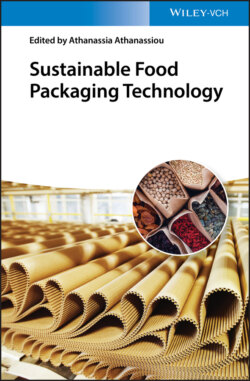Читать книгу Sustainable Food Packaging Technology - Группа авторов - Страница 42
2.4 Future Perspectives and Concluding Remarks
ОглавлениеThe amount of biowaste generated by food processing industries is huge. This biowaste can be valorized to obtain raw materials for the production of food packaging, reducing the use of nonrenewable and nonbiodegradable materials in line with the sustainability principles. In particular, proteins such as collagen and gelatin can be obtained from fishery waste and by‐products, but also active compounds can be extracted from other food processing wastes or by‐products in order to develop novel active packaging to extend food shelf life and reduce food losses. A review of the most employed methods to extract biopolymers from fishery waste, comparing benefits and drawbacks of the use of chemical and enzymatic processes, has been provided. In relation to film and coating production, wet (solution casting, spraying, dipping) and dry processes (compression molding, extrusion) have been mentioned in this chapter, highlighting the potential of dry processes for scaling‐up production. Also, the characterization of the most relevant properties of the films and coatings developed using fish gelatin and chitosan has been reported in order to give information on an appropriate selection of the most suitable material for specific food products. In particular, properties related to food quality and food life‐extension have been highlighted by means of the use of natural antioxidants and antimicrobials. Although further research is still needed, mainly to scale production at competitive costs, the valorization of food processing biowaste to produce active packaging could become a suitable approach toward more sustainable food packaging.
